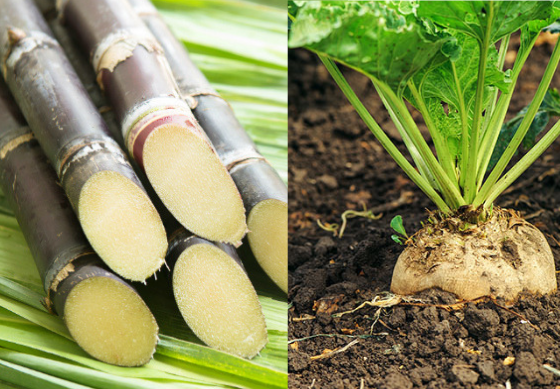The refining process of beet sugar vs cane sugar differs, affecting the final product’s quality.
Recognizing the Nutritional Conveniences of Beetroot Sugar Vs Walking Cane Sugar for Health Conscious Consumers
When analyzing the nutritional ramifications of beetroot sugar versus walking stick sugar, health-conscious customers discover that both ranges primarily include sucrose and deal similar calorie worths, each contributing around 16 calories per teaspoon. Regardless of this similarity, neither type provides significant health advantages, as they are without crucial nutrients. Discovering the more comprehensive influences, including ecological factors to consider and long-term health impacts of sugar consumption, could light up a lot more nuanced differences in between these 2 sugars.
Nutritional Profile and Caloric Value of Beetroot Sugar and Walking Stick Sugar
Although both beetroot sugar and walking stick sugar are primarily made up of sucrose, their dietary accounts and calorie values are remarkably similar. There are trace differences in the impurities that remain after processing, which can somewhat affect the flavor and shade of the sugars, yet these are negligible in terms of health effect. For consumers focusing on dietary effect, the selection in between beet and walking stick sugar is much more about individual preference or potential environmental concerns rather than dietary differences.
Ecological Effect and Sustainability of Sugar Manufacturing
While the dietary differences between beetroot sugar and cane sugar are very little, their production processes offer more significant variations, particularly in terms of ecological effect and sustainability. In contrast, beetroot sugar production commonly calls for much less land and can be grown in more pleasant environments, which might lower the demand for irrigation and the associated water source deficiency.
However, beetroot growing is not without its ecological difficulties; it entails considerable power inputs, particularly in the north climates where it is expanded, because of the need for longer heating periods in sugar handling. Both sugar beet and sugar walking stick markets are discovering a lot more sustainable methods, consisting of plant rotation, natural farming, and boosted moved here waste management methods to alleviate these impacts.
Wellness Results and Recommendations for Sugar Consumption
In spite of their marginal nutritional differences, both beetroot sugar Going Here and cane sugar can have destructive wellness results when eaten in unwanted. High intake of either kind of sugar contributes to a variety of health problems, including excessive weight, kind 2 diabetic issues, and cardiovascular disease. Both sugars are pure sucrose and offer no necessary nutrients in addition to calories, bring about rapid spikes in blood sugar level levels upon usage.


Final Thought
